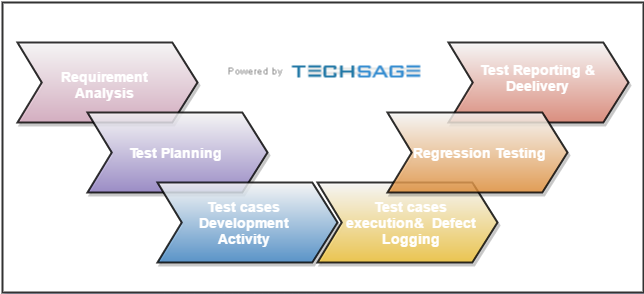Techsage Testing
Security testing
Our security experts perform real–world attack simulations to test defenses and uncover actual risk from the perspective of a motivated attacker. To take this service to the next level, our Security Program Maturity Testing offering delivers insight into programmatic security issues, including identification and guidance on root cause solutions to provide recommendations for defenses based on the attacker mindset.
The best way to know how intruders will actually approach your network is to simulate an attack under controlled conditions. Our Penetration Testing Services team delivers network, application, wireless, and social engineering engagements to demonstrate the security level of your organization's key systems and infrastructure. This simulation of real–world attack vectors documents actual risks posed to your company from the perspective of a motivated attacker.
Manual testing
Being one of the most meticulous software testing methodologies, manual testing has not lost its significance in todays’ automation and advanced testing tools dominated quality assurance niche. At Techsage, we offer highly exhaustive manual testing and quality assurance testing services. Our enterprise grade software testing and quality assurance offer the scalability and flexibility for assisting the enterprise development engagements to ensue faultlessness in any software or development app using manual testing methodologies. Our experts excel in implementing the manual testing best practices aimed at determining any flaws or bugs affecting the software functionality, minimising risks and aiding our clients deliver impeccable software and apps.

At Techsage, we emphasise on creating custom requirements based manual test cases to ensure that every software and app gets tested in the bespoke manner. This helps us to deliver traceability and minimise any potential defects which may impact the performance of the software. Our experts ensure that they implement the perspective of your end users and test the software in the way it will be used by your customers.
Integration Testing
Integration Testing is a level of software testing where individual units are combined and tested as a group. The purpose of this level of testing is to expose faults in the interaction between integrated units. Test drivers and test stubs are used to assist in Integration Testing.
Techsage Integration testing approach:
- Big Bang is an approach to Integration Testing where all or most of the units are combined together and tested at one go. This approach is taken when the testing team receives the entire software in a bundle. So what is the difference between Big Bang Integration Testing and System Testing? Well, the former tests only the interactions between the units while the latter tests the entire system.
- Top Down is an approach to Integration Testing where top level units are tested first and lower level units are tested step by step after that. This approach is taken when top down development approach is followed. Test Stubs are needed to simulate lower level units which may not be available during the initial phases.
- Bottom Up is an approach to Integration Testing where bottom level units are tested first and upper level units step by step after that. This approach is taken when bottom up development approach is followed. Test Drivers are needed to simulate higher level units which may not be available during the initial phases.
- Sandwich/Hybrid is an approach to Integration Testing which is a combination of Top Down and Bottom Up approaches.
You can also like to check our TaaS Automation phases here